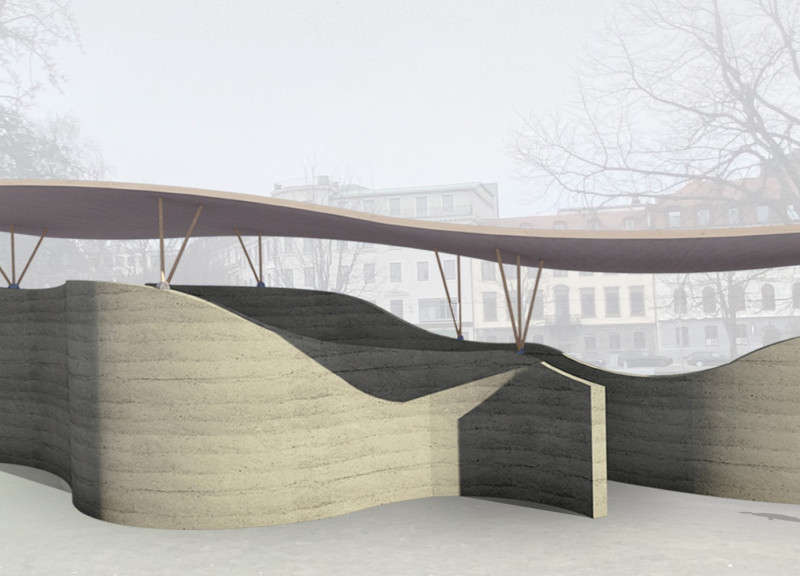5 key facts about this project
The TERRA PAVILION is located in Gothenburg, Sweden, at Bältespännarparken. It functions as a space for exploration and education that focuses on using earth as a building material. The pavilion was designed in response to the significant soil excavation for The West Link railway tunnel, which has produced around 2,000,000 m³ of soil and clay. This project aims to take this material, often treated as waste, and transform it into a usable and meaningful structure. The design concept features a gentle, wave-like shape that connects the built environment to the natural surroundings, including the nearby sea and islands.
Architectural Form and Integration
The pavilion's wave-like form is important for its design and purpose. It encourages a relationship between the building and the landscape. This organic shape stands in contrast to conventional, straight-edged architecture. The design invites visitors to explore both the pavilion itself and its surroundings, creating an engaging experience that encourages interaction with nature.
Materiality and Function
The walls of the pavilion are constructed from locally sourced rammed earth, which remains in its natural grey state without any added color. This choice aligns the building with its environmental context. The design includes a lightweight wood panel roof to protect the walls from rain, a practical solution for Gothenburg's wet climate. This roof helps to preserve the structure while adding to its visual complexity.
Community Engagement
The TERRA PAVILION is more than just a shelter; it also serves as a community space. Inside, there is an exhibition dedicated to earth-based materials, aiming to educate visitors about sustainable practices. The walls are built through a participatory process that allows local craftspeople and students to contribute, enhancing community involvement and knowledge transfer.
Environmental Considerations
This structure raises questions about the role of earth in construction, especially in climates that experience cold and wet weather. By focusing on local materials and sustainable methods, the pavilion demonstrates the potential of rammed earth as a viable building technique. It serves its purpose as a public space while encouraging conversation about the uses and benefits of earth as a fundamental material in architecture.
Visitors experience a unique play of light and shadow within the building. The undulating roof creates dynamic effects throughout the day, enhancing the overall atmosphere as people move through the space.



















































